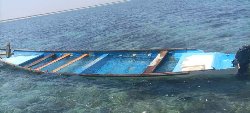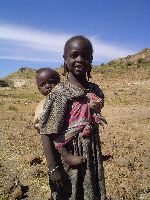Uneven Recovery Drives Growing Inequality Across East Asia And The Pacific
More than a year into the COVID-19 pandemic, the developing economies of East Asia and the Pacific (EAP) are facing a markedly uneven recovery, according to the World Bank’s latest economic update for the region, released today.
Only China and Vietnam are experiencing a V-shaped rebound where output has already surpassed pre-pandemic levels. In the other major economies, output remained on average around 5 percent below pre-pandemic levels. Hardest hit of all have been the Pacific Island countries. Economic performance has depended on the effectiveness of virus containment, the ability to take advantage of the revival of international trade, and the capacity of governments to provide fiscal and monetary support.
In 2020, poverty in the region stopped declining for the first time in decades. An estimated 32 million people in the region failed to escape poverty (at a poverty line of $5.50/ day) due to the pandemic.
“The economic shock caused by the COVID-19 pandemic has stalled poverty reduction and increased inequality,” said Victoria Kwakwa, Vice President for East Asia and the Pacific at the World Bank. “As countries begin to rebound in 2021, they will need to take urgent action to protect vulnerable populations and ensure a recovery which is inclusive, green and resilient.”
Inequality increased, driven by the pandemic and resulting shutdowns, as well as unequal access to social services and digital technologies. In some countries, children in the poorest two-fifths of households were 20 percent less likely to be engaged in learning than children of the top one-fifth. Women are suffering more violence than previously: 25 percent of respondents in Lao PDR and 83 percent in Indonesia said that domestic violence worsened due to COVID-19.
Growth in the region is expected to accelerate from an estimated 1.2 percent in 2020 to 7.5 percent in 2021. But we are likely to see a three-speed recovery. China and Vietnam are expected to grow even more strongly in 2021, by 8.1 percent and 6.6 percent, respectively, up from 2.3 percent and 2.9 percent in 2020. Other large economies, more scarred by the crisis, will grow about 4.6 percent on average, slightly slower than pre-crisis growth. Recovery is expected to be particularly protracted in tourism-dependent Island economies.
The report estimates that US stimulus could add 1 percentage point on average to the growth of countries in the region in 2021 and advance recovery by about three months on average. Risks to the outlook come from slow implementation of COVID-19 vaccines, which could slow growth by as much as 1 percentage point in some countries.
The report calls for action to contain the disease, support the economy, and green the recovery. It warns that with current stocks and allocation of vaccines, industrial countries would achieve more than 80 percent population coverage by the end of 2021, while developing countries will achieve only about 55 percent coverage. In many EAP countries, relief is less than earning losses, stimulus has not fully remedied deficient demand, and public investment is not a significant part of recovery efforts, even as public debt has increased on average by 7 percentage points of GDP. And “green” measures are outstripped by “brown” activities in the stimulus packages across the region: on average only one-in-four recovery measures taken by countries in the region are climate friendly.
“We need international cooperation more than ever, to contain the disease, support the economy, and green the recovery,” said Aaditya Mattoo, Chief Economist for East Asia and the Pacific at the World Bank. “China can play a vital role, by exporting more medical products, boosting its consumption, and taking stronger climate action. And it too would benefit from a safer world and more balanced growth.”
The report calls for international cooperation in the production and approval of vaccines as well as in allocation based on need, to help contain COVID-19. Fiscal coordination would magnify the collective impact because some governments tend to under-provide stimulus. And apart from cooperative reduction in emissions, international assistance would help poorer developing countries take deeper climate action.
Uneven Recovery, which focused on vaccination, fiscal, and climate change policies, follows on two economic updates for the region in 2020 that looked at six other policy dimensions of a resilient recovery from the COVID-19 pandemic: smart containment, smart schooling, stepped-up social protection, support for firms, balanced financial sector policies, and trade reform.


 UN News: Ceasefire The Only Way To End Killing And Injuring Of Children In Gaza
UN News: Ceasefire The Only Way To End Killing And Injuring Of Children In Gaza ICHRP: US-Japan-Philippines Trilateral Summit Makes The Philippines A Battlefield For US-China Conflict
ICHRP: US-Japan-Philippines Trilateral Summit Makes The Philippines A Battlefield For US-China Conflict East West Center: Environmental Journalist Alexander Kaufman Receives East-West Center’s Inaugural Melvin M.S. Goo Writing Fellowship
East West Center: Environmental Journalist Alexander Kaufman Receives East-West Center’s Inaugural Melvin M.S. Goo Writing Fellowship Compassion in World Farming: Octopus Farm Must Be Stopped, Say Campaigners
Compassion in World Farming: Octopus Farm Must Be Stopped, Say Campaigners UN News: Shipwreck Tragedy Off Djibouti Coast, Drone Attacks Continue At Ukraine Nuclear Plant, Madagascar Cyclone Update
UN News: Shipwreck Tragedy Off Djibouti Coast, Drone Attacks Continue At Ukraine Nuclear Plant, Madagascar Cyclone Update UN News: Aid Lifeline Reaches Sudan's Darfur Region In Bid To Avert ‘Hunger Catastrophe’
UN News: Aid Lifeline Reaches Sudan's Darfur Region In Bid To Avert ‘Hunger Catastrophe’